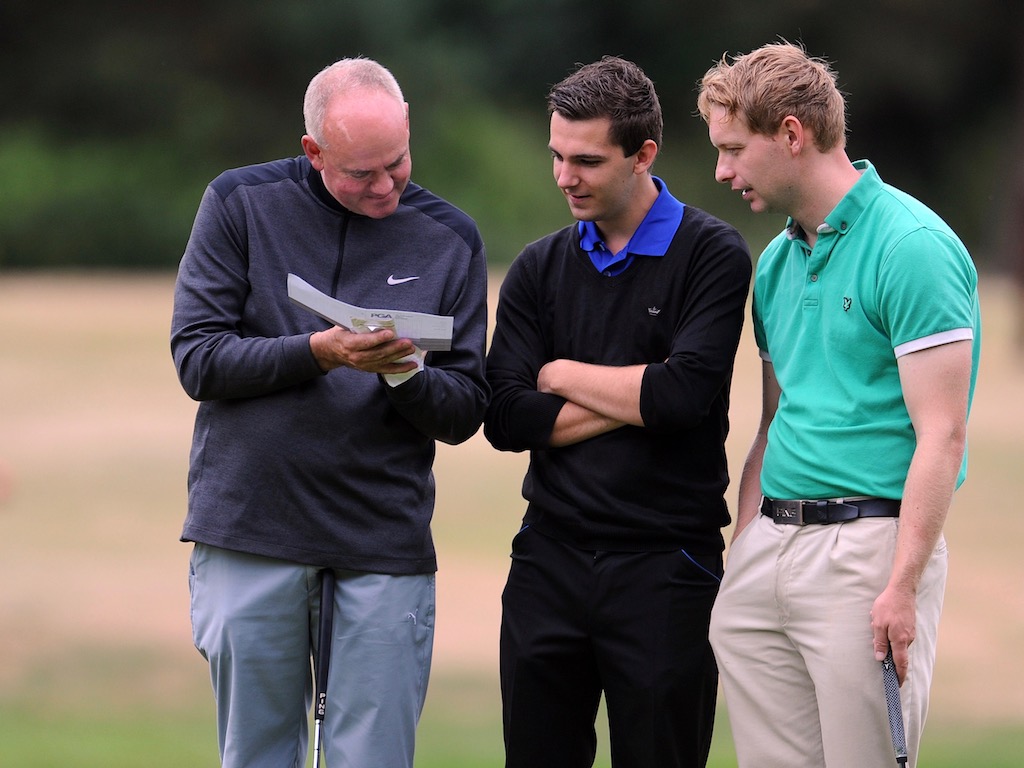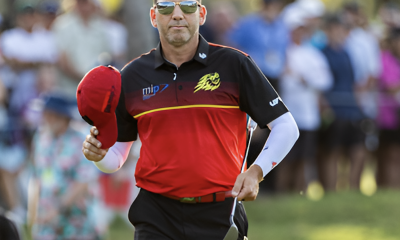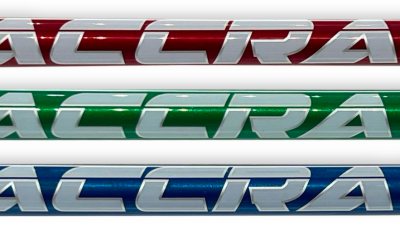Instruction
How to use your handicap to lower your scores

The fastest way to improve the game of an amateur, or a handicap golfer, is to use the established handicap as a guide to direct and then to measure that improvement. The measurement component is simple; as the game improves, the handicap goes down. Using the handicap as a guide is a bit more complex because the player must be dedicated, determined and disciplined enough to stay within the improvement process. And before I share with you the process, I want to share the foundation, or the rationale, that makes it work.
“Placing the ball in the right position for the next shot is 80 percent of winning golf.”
— Ben Hogan
Not all that long ago, I was present when a friend of a client of mine was complaining that no matter what he did with practice or lessons he just wasn’t getting better. He said that if he could just break 90 once he could “die a happy man.” It sounded like an opportunity to be of service to me, so I agreed to a playing lesson. The short version of that lesson was I told him what to hit and where to hit it — and he shot 87.
Was he happy? Not on your life! Angry, not quite… but really upset. Why? The poor guy said he didn’t have any fun!
The day of the playing lesson, I met the player on the range while he was warming up. I observed that he should never hit a driver, so I didn’t let him. I observed he couldn’t hit a long iron, so I didn’t let him. I had him tee off with a six iron on the par 4’s and 5’s, which he hated. And if he could have controlled his putting distance a bit better he wouldn’t have three-putted three times. No penalty shots, no water balls and no OB’s. All we did for 18 holes was try to put the ball in play and to keep it in play. He hated it. So much for dying a happy man.
During this playing lesson, I used the player’s handicap as a guide to maximize his playing ability, and I used his ability to help him make the best score he could at that time. So how did I use his handicap? I could see this player was no better than an 18, so I added one stroke to the posted par for each hole. Par 3’s became Par 4’s. Par 4’s became Par 5’s, and Par 5’s became Par 6’s. Once his par was established, he played each hole to get on the green according to that par adjustment. For example, the 210-yard par-3 became a 210-yard par-4. So instead of trying to get on the green from the tee, we used a strategy to get on the green in two and then two-putt for a 4, or “his par.”
I advocate every player use this handicap game-improvement system. A 15-handicap adjusts 15 holes so his par changes from 72 to 87; an 8-handicap adjusts eight holes so that his par changes from 72 to 80. I use this process for plus handicaps and professionals as well. A plus-4 adjusts four holes so his/her par changes from 72 to 68. Using this mindset, my playing lesson shot 3-under his par of 90.
I’ve had clients cut their handicaps in half in just a few months by adherence to this process. It works in lowering scores because it eliminates most “unforced errors,” and about half of all dropped shots at all levels are a direct result of unforced errors. Unforced errors occur when something is attempted that the player can’t do or shouldn’t do. The fewer unforced errors per round, the lower the score. It’s as simple as that.
I strongly urge golfers to chart each round of golf in order to identify every unforced error. Just email me at [email protected] and I will send the game-improvement scorecard that I have my clients use to evaluate their performance.
Posting lower scores is how handicaps go down, and all handicaps plateau when the player is faced with the realities of what he/she can and can’t do. For example, an improving handicap golfer may require the need to use clubs or hit shots not previously necessary. The playing experience reveals what needs practice, and practice is where the player should learn what can and can’t be done. Rule of Thumb: if you can do it 7/10 times in practice, you can consider doing it in play.
In the opening paragraph, I stated that dedication, determination, and discipline are required to stay within this improvement process should the player decide to implement it. But I should have said it takes a whole lot of all three. Experience tells me that players say what they feel, but do what they want. Neither is a plan for progress.
- LIKE116
- LEGIT11
- WOW2
- LOL3
- IDHT2
- FLOP1
- OB1
- SHANK5
Instruction
The Wedge Guy: The easiest-to-learn golf basic

My golf learning began with this simple fact – if you don’t have a fundamentally sound hold on the golf club, it is practically impossible for your body to execute a fundamentally sound golf swing. I’m still a big believer that the golf swing is much easier to execute if you begin with the proper hold on the club.
As you might imagine, I come into contact with hundreds of golfers of all skill levels. And it is very rare to see a good player with a bad hold on the golf club. There are some exceptions, for sure, but they are very few and very far between, and they typically have beat so many balls with their poor grip that they’ve found a way to work around it.
The reality of biophysics is that the body moves only in certain ways – and the particulars of the way you hold the golf club can totally prevent a sound swing motion that allows the club to release properly through the impact zone. The wonderful thing is that anyone can learn how to put a fundamentally sound hold on the golf club, and you can practice it anywhere your hands are not otherwise engaged, like watching TV or just sitting and relaxing.
Whether you prefer an overlap, interlock or full-finger (not baseball!) grip on the club, the same fundamentals apply. Here are the major grip faults I see most often, in the order of the frequency:
Mis-aligned hands
By this I mean that the palms of the two hands are not parallel to each other. Too many golfers have a weak left hand and strong right, or vice versa. The easiest way to learn how to hold the club with your palms aligned properly is to grip a plain wooden ruler or yardstick. It forces the hands to align properly and shows you how that feels. If you grip and re-grip a yardstick several times, then grip a club, you’ll see that the learning curve is almost immediate.
The position of the grip in the upper/left hand
I also observe many golfers who have the butt of the grip too far into the heel pad of the upper hand (the left hand for right-handed players). It’s amazing how much easier it is to release the club through the ball if even 1/4-1/2″ of the butt is beyond the left heel pad. Try this yourself to see what I mean. Swing the club freely with just your left hand and notice the difference in its release from when you hold it at the end of the grip, versus gripping down even a half inch.
To help you really understand how this works, go to the range and hit shots with your five-iron gripped down a full inch to make the club the same length as your seven-iron. You will probably see an amazing shot shape difference, and likely not see as much distance loss as you would expect.
Too much lower (right) hand on the club
It seems like almost all golfers of 8-10 handicap or higher have the club too far into the palm of the lower hand, because that feels “good” if you are trying to control the path of the clubhead to the ball. But the golf swing is not an effort to hit at the ball – it is a swing of the club. The proper hold on the club has the grip underneath the pad at the base of the fingers. This will likely feel “weak” to you — like you cannot control the club like that. EXACTLY. You should not be trying to control the club with your lower/master hand.
Gripping too tightly
Nearly all golfers hold the club too tightly, which tenses up the forearms and prevents a proper release of the club through impact. In order for the club to move back and through properly, you must feel that the club is controlled by the last three fingers of the upper hand, and the middle two fingers of the lower hand. If you engage your thumbs and forefingers in “holding” the club, the result will almost always be a grip that is too tight. Try this for yourself. Hold the club in your upper hand only, and squeeze firmly with just the last three fingers, with the forefinger and thumb off the club entirely. You have good control, but your forearms are not tense. Then begin to squeeze down with your thumb and forefinger and observe the tensing of the entire forearm. This is the way we are made, so the key to preventing tenseness in the arms is to hold the club very lightly with the “pinchers” — the thumbs and forefingers.
So, those are what I believe are the four fundamentals of a good grip. Anyone can learn them in their home or office very quickly. There is no easier way to improve your ball striking consistency and add distance than giving more attention to the way you hold the golf club.
More from the Wedge Guy
- The Wedge Guy: Golf mastery begins with your wedge game
- The Wedge Guy: Why golf is 20 times harder than brain surgery
- The Wedge Guy: Musings on the golf ball rollback
- LIKE84
- LEGIT13
- WOW5
- LOL1
- IDHT0
- FLOP4
- OB1
- SHANK8
Instruction
Clement: Stop ripping off your swing with this drill!

Not the dreaded headcover under the armpit drill! As if your body is defective and can’t function by itself! Have you seen how incredible the human machine is with all the incredible feats of agility all kinds of athletes are accomplishing? You think your body is so defective (the good Lord is laughing his head off at you) that it needs a headcover tucked under the armpit so you can swing like T-Rex?
- LIKE0
- LEGIT2
- WOW2
- LOL0
- IDHT0
- FLOP0
- OB0
- SHANK2
Instruction
How a towel can fix your golf swing

This is a classic drill that has been used for decades. However, the world of marketed training aids has grown so much during that time that this simple practice has been virtually forgotten. Because why teach people how to play golf using everyday items when you can create and sell a product that reinforces the same thing? Nevertheless, I am here to give you helpful advice without running to the nearest Edwin Watts or adding something to your Amazon cart.
For the “scoring clubs,” having a solid connection between the arms and body during the swing, especially through impact, is paramount to creating long-lasting consistency. And keeping that connection throughout the swing helps rotate the shoulders more to generate more power to help you hit it farther. So, how does this drill work, and what will your game benefit from it? Well, let’s get into it.
Setup
You can use this for basic chip shots up to complete swings. I use this with every club in my bag, up to a 9 or 8-iron. It’s natural to create incrementally more separation between the arms and body as you progress up the set. So doing this with a high iron or a wood is not recommended.
While you set up to hit a ball, simply tuck the towel underneath both armpits. The length of the towel will determine how tight it will be across your chest but don’t make it so loose that it gets in the way of your vision. After both sides are tucked, make some focused swings, keeping both arms firmly connected to the body during the backswing and follow through. (Note: It’s normal to lose connection on your lead arm during your finishing pose.) When you’re ready, put a ball in the way of those swings and get to work.

Get a Better Shoulder Turn
Many of us struggle to have proper shoulder rotation in our golf swing, especially during long layoffs. Making a swing that is all arms and no shoulders is a surefire way to have less control with wedges and less distance with full swings. Notice how I can get in a similar-looking position in both 60° wedge photos. However, one is weak and uncontrollable, while the other is strong and connected. One allows me to use my larger muscles to create my swing, and one doesn’t. The follow-through is another critical point where having a good connection, as well as solid shoulder rotation, is a must. This drill is great for those who tend to have a “chicken wing” form in their lead arm, which happens when it becomes separated from the body through impact.
In full swings, getting your shoulders to rotate in your golf swing is a great way to reinforce proper weight distribution. If your swing is all arms, it’s much harder to get your weight to naturally shift to the inside part of your trail foot in the backswing. Sure, you could make the mistake of “sliding” to get weight on your back foot, but that doesn’t fix the issue. You must turn into your trial leg to generate power. Additionally, look at the difference in separation between my hands and my head in the 8-iron examples. The green picture has more separation and has my hands lower. This will help me lessen my angle of attack and make it easier to hit the inside part of the golf ball, rather than the over-the-top move that the other picture produces.


Stay Better Connected in the Backswing
When you don’t keep everything in your upper body working as one, getting to a good spot at the top of your swing is very hard to do. It would take impeccable timing along with great hand-eye coordination to hit quality shots with any sort of regularity if the arms are working separately from the body.
Notice in the red pictures of both my 60-degree wedge and 8-iron how high my hands are and the fact you can clearly see my shoulder through the gap in my arms. That has happened because the right arm, just above my elbow, has become totally disconnected from my body. That separation causes me to lift my hands as well as lose some of the extension in my left arm. This has been corrected in the green pictures by using this drill to reinforce that connection. It will also make you focus on keeping the lead arm close to your body as well. Because the moment either one loses that relationship, the towel falls.


Conclusion
I have been diligent this year in finding a few drills that target some of the issues that plague my golf game; either by simply forgetting fundamental things or by coming to terms with the faults that have bitten me my whole career. I have found that having a few drills to fall back on to reinforce certain feelings helps me find my game a little easier, and the “towel drill” is most definitely one of them.
- LIKE12
- LEGIT2
- WOW2
- LOL0
- IDHT0
- FLOP2
- OB0
- SHANK8
-

 19th Hole6 days ago
19th Hole6 days agoDave Portnoy places monstrous outright bet for the 2024 Masters
-

 19th Hole2 weeks ago
19th Hole2 weeks agoThings got heated at the Houston Open between Tony Finau and Alejandro Tosti. Here’s why
-

 19th Hole7 days ago
19th Hole7 days agoTiger Woods arrives at 2024 Masters equipped with a putter that may surprise you
-

 19th Hole2 weeks ago
19th Hole2 weeks agoReport: Tiger Woods has ‘eliminated sex’ in preparation for the 2024 Masters
-

 19th Hole1 day ago
19th Hole1 day agoTwo star names reportedly blanked Jon Rahm all week at the Masters
-

 19th Hole2 weeks ago
19th Hole2 weeks agoAddiction, spinal fusion, and scam artists – Everything Anthony Kim revealed in candid interview with David Feherty
-

 19th Hole2 weeks ago
19th Hole2 weeks agoAnthony Kim says doctors told him that he ‘may not have much time left’ ahead of LIV return
-

 19th Hole1 week ago
19th Hole1 week agoBrooks Koepka and Sergio Garcia make significant equipment changes as 2024 Masters looms


























Pingback: How to Lower Your Golf Handicap | Golf Murah Golf Murah
R k
Jul 17, 2018 at 8:02 am
Ed’s few articles published on GolfWRX are probably the most useful I’ve ever read on actually attempting to lower your handicap.
Adam Gutterman
Jul 15, 2018 at 8:38 am
I helped someone on my annual buddy trip in a similar way a few years ago. Very powerful young player who had no idea how to think his way around the course. On the third day his uncle asked him to do what I told him for the round. There wasn’t anything genius about it – I made him hit irons off most tees since that put him in the fat part of the fairway. On approaches I made him shoot at the center of the greens using an extra club since he liked to max out his irons on every shot. He broke 40 for the first time, but didn’t enjoy playing that way enough to keep doing it.
My big takeaway from that experience and this article is that people find enjoyment on the course in different ways. What’s most important is for people to really think about what that is for them. I’m pretty conservative by nature so I tend to try and minimize risk, so I probably leave some birdies out on the course. At the same time, there’s nothing wrong with playing outside of your ability so long as you understand that this is what your doing, and don’t beat yourself up when you don’t pull off the shots.
Tom
Jul 15, 2018 at 8:33 am
Good idea, but the use of the term “unforced error” in the game of golf is ridiculous. Tell me what a “forced” error is.
James T
Jul 15, 2018 at 10:06 pm
Let me give that a try. An unforced error in golf is when you try a risk/reward shot and fail… and suffer the consequences. A “forced error” is when you simply hit a bad shot that costs you. Almost every time I’m on the 13th hole (a par 5) at my home course I’m faced with, “Do I go for the green in two, over the pond, or lay up and challenge for a birdie the conventional way.” Usually, if I’m 1 or 2 over par at that point I’ll chicken out and lay up to protect my score. If I’m 3 or more over I’ll go for it. Which 50% of the time ends up putting me another stroke or two over par. An unforced error that I took on knowing the potential calamity.
Logan
Jul 16, 2018 at 9:22 am
A forced error would be having to hit a driver when you aren’t very comfortable with it to carry a hazard off the tee. While it may not be the percentage play for you, you have no other choice but to hit the driver for that distance.
Carson Henry
Jul 14, 2018 at 1:57 pm
Ed … This is absolutely FANTASTIC. A fabulous approach to game improvement!